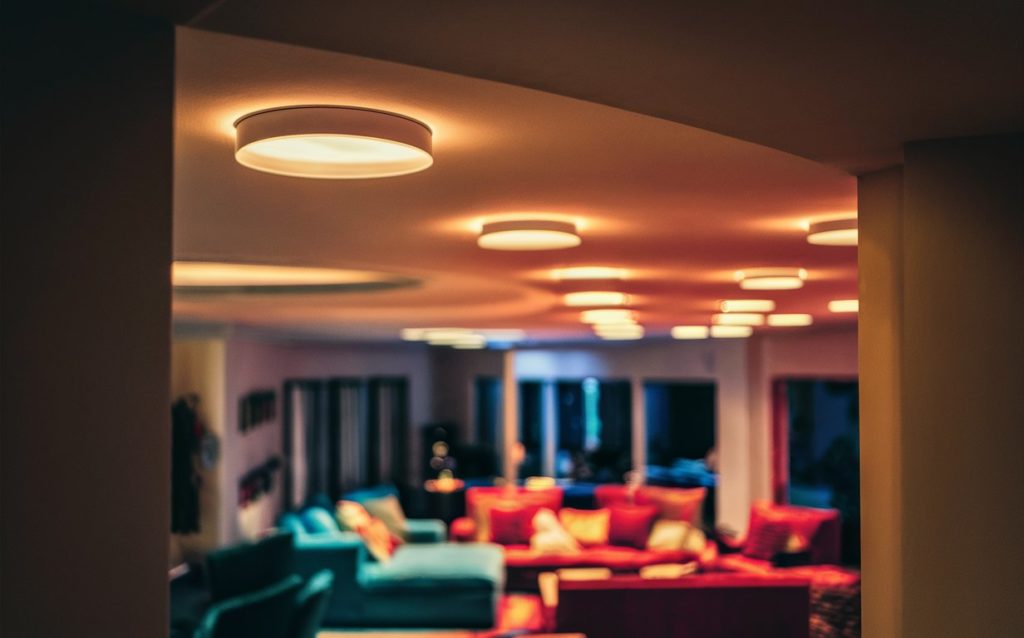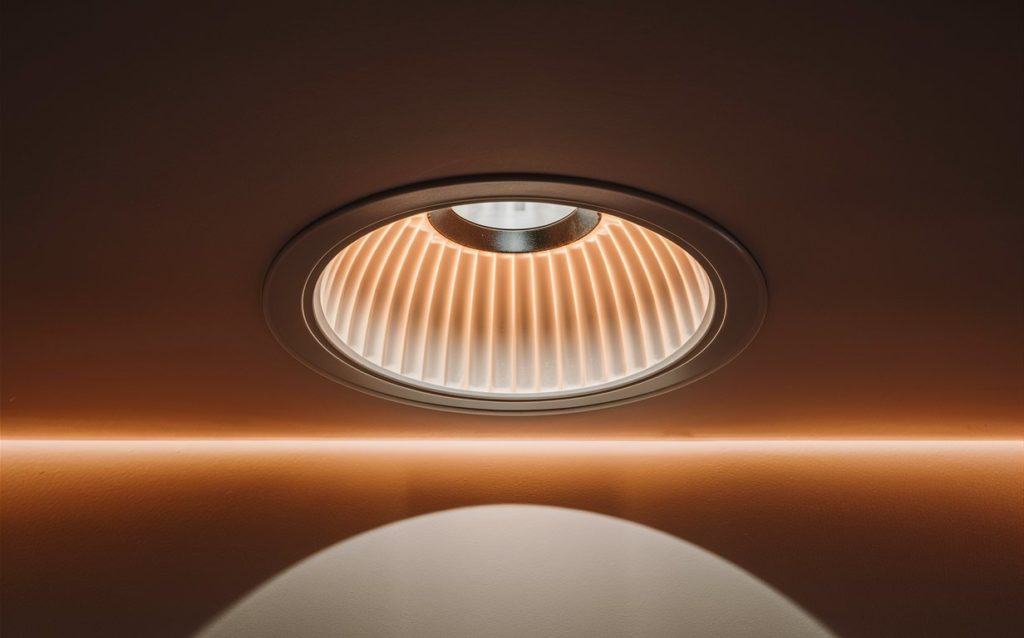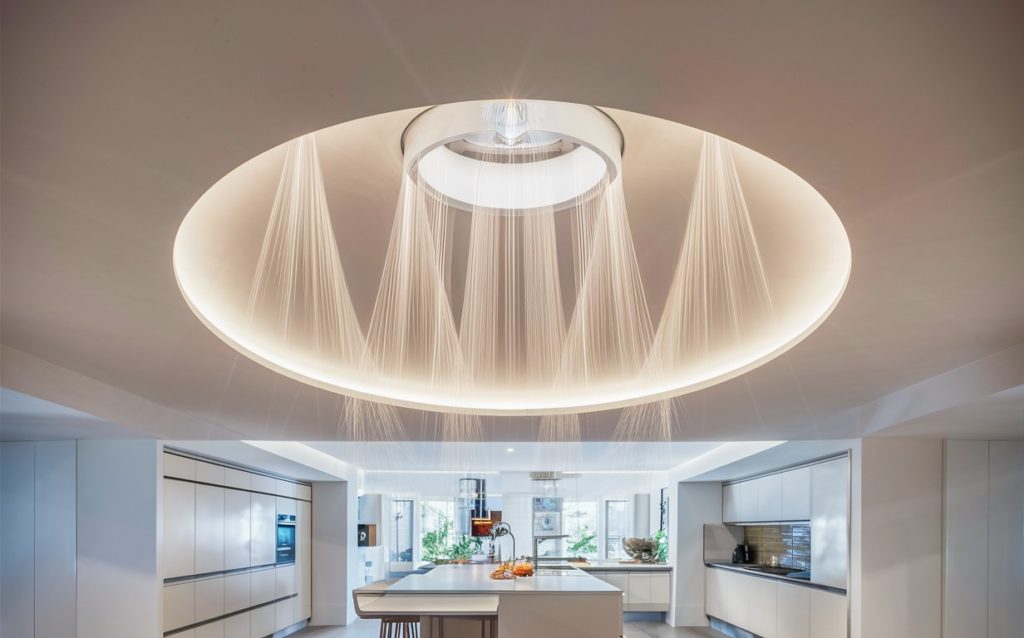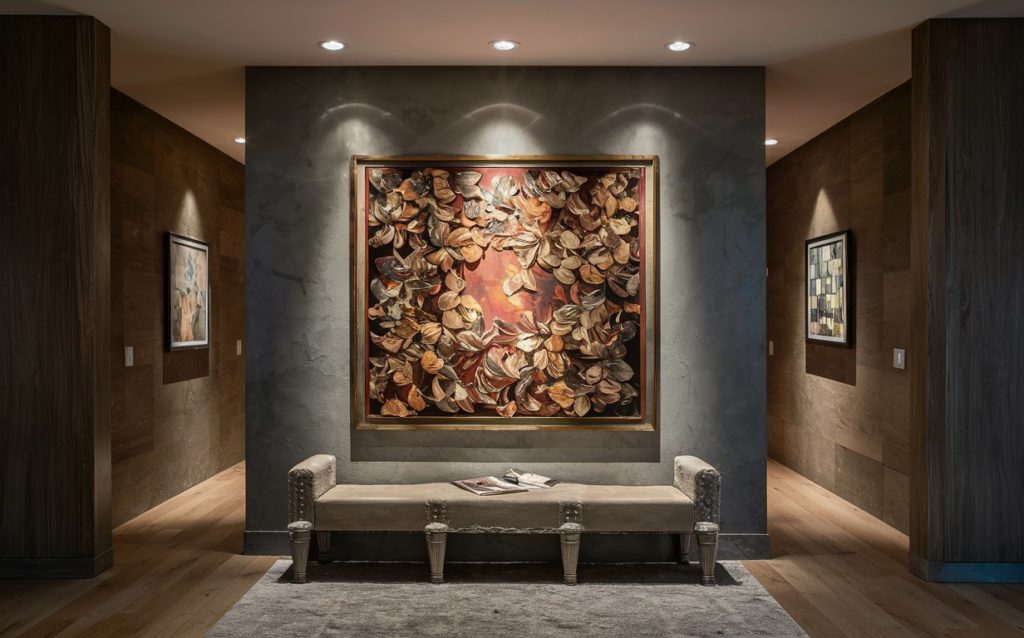Recessed Lighting: Types, Comparison & Buying Guide
9 Mins Read
April 24th, 2024
Who doesn’t want their home to look and feel like one that’s straight out of a movie? One of the ways to bring the main character energy, highlight gorgeous parts of your room, and create a magical spotlight look is by using recessed lighting.
While it may sound fairly simple, there’s a lot to selecting the right recessed lighting and making sure it fits your design style, functionality, and vision. That’s what we’ll cover in this blog. So, stick with us, and let’s understand everything there is to know about recessed lighting!
Jump ahead to:
Recessed lighting is one of the best lighting options for your home. Whether you have a stringent or a colossal budget, you can always use recessed, or can lighting. Here are a few reasons why recessed lighting comes in handy for your lighting plan:
✅ It eliminates shadows
✅ Spreads light around the room
✅ Highly cost-efficient, and reusable
✅ They hide the bulb and contribute to the design aesthetic you choose
✅ They don’t compete with other lighting in the space
✅ Minimizes the number of hanging lighting fixtures in an open space
| Liz Bianco, an Interior Designer and Content Creator says, “Recessed lights are useful in building illumination in homes. They don’t compete with other lighting fixtures, low ceilings, views, TVs, etc.” |

It’s the main protective structure hidden in the ceiling. If you’re working with a new construction, you install the light before the sheetrock, or drywall is installed. For remodeled houses, you use smaller recessed lighting when the ceiling is already in place.
It’s the molding that covers the ceiling opening around the light. Here are different types of recessed lighting trims:



This trim reduces glare and prevents you from getting eye strain from too much exposure to bright light. Perfect to use in living rooms, entryways, and foyers. It has a ribbed interior that minimizes glare, so even if you use it in your living room, near the TV, it won’t affect your viewing comfort.
Read also – The Ultimate Guide to Home Lighting Fixtures



This trim amplifies light and makes it more vibrant. It can be used in kitchens, and places with high ceilings.



Ideal for directional lighting, and is used in accent walls and sloped ceilings. You can direct and focus light to where you want it.



This trim is ideal if you have to highlight artwork on walls. It almost washes the entire wall with light and creates a beautiful effect around the artwork. This trim uses a scoop to direct or confine light to a specific area of the wall.



Apt for wet areas, and works on ceiling-mount trims. The structure of the trim resists moisture and corrosion due to exposure.
Read also – 6 Best Bathroom Lighting Ideas For All Bathroom Design Styles
Do you want to hide the bulb, or not want recessed lights to compete with other lighting in the space? Do you want to minimize the number of hanging spaces that mimic each other in an open space? This is the first decision you need to make and then proceed from thereon.
Depending on the type of budget you have, the construction, and the need you can arrive at your budget. If the house you’re working on is newly constructed or is a remodel, if it’s in contact with insulation or not – these are all questions you need to ask, before arriving at the budget for recessed lighting. You’ve heard the adage– spend 10% of your design budget on lighting. Quality lighting is important, yes, but evaluating your needs thoroughly is the first step to getting there.



You’d have seen long hallways with a grid of recessed lights. It’s fairly easy to design and install. But what happens when you want to flaunt the rare sculpture you bought, the artwork you got online, or your family heirloom? That’s when asymmetrical, accent lighting design comes in handy. Your recessed lighting is versatile and you to use them to highlight key elements of the space when required. Is it highlighting the right areas? Task-based lighting using recessed lighting is great for work/living areas.
✅Get all the plans in place (architectural plan, lighting plan, electrical plan, etc).
✅ Check where are the built-ins that are permanently attached to the wall, and plan a lighting design to not interfere with these built-ins
✅ Think about ceiling obstructions you may come in contact with – beams, coffered ceilings, sprinklers, and light fixtures
✅ Ceiling height is also important in deciding what fixtures to use
✅ What would the furniture arrangement look like, and how would the traffic be in the room?
✅ Where are the important tasks performed in the room? Do you have sufficient lighting for the space?
Depending on where you want the recessed lights, you can choose the color and type of lights, to create the effect you intend to.
|
Type of lighting |
Effect |
| Soft recessed lighting | Comfortable glow |
| Bright recessed lighting | Refreshing, cool glow |
| Daylight-mimicking recessed lighting | Warm, and refreshing glow |
Recessed, or can lights are meant to be used in quantity. A single can light rarely has the power to brighten a whole room. Multiple lights work well together.
You pick the perfect fixtures, designs, and decor items as a designer. Keeping this nitty-gritty in mind will help you anticipate and avoid these errors, and give your clients a fulfilling, glowing home.
Read also – The Importance of Lighting in Interior Design



When you enter the room you’re designing, which way do you enter, and which areas do you need to be brightened immediately? Do you want to turn on all the lights together at once, batched together in sections, or turned on individually? Where do you want the switches to be? The corner, center, or under certain appliances?
Don’t use only one source of lighting, be it recessed or any other type of lighting. There will be shadows if you restrict yourself to one lighting type.
| Liz Bianco, an Interior Designer and Content Creator says, “Bring in other lighting fixtures, based on the layout of the room, and pay attention to their features, so you can adjust recessed lights accordingly. Recessed lights are only an additional light source, so place them right.” |
Light shopping is no easy task. Since your choice of lighting will directly impact the quality of life of the homeowner, make it a habit to check the following specifications when going recessed light shopping:
| Specification |
Meaning and Significance |
| Lumen | The total quantity of light visible to the human eye, regardless of the direction in which it is emitted |
| Beam spread | How light is distributed from the source |
| CRI Index | The Color Rendering Index is a quantitative measure of a light source’s ability to accurately render colors. Has to be 85 or greater, to make colors appear more vibrant |
| Trim | This is the part of the light that you see when you look at the ceiling, so it has to align with your aesthetic |
Typical incandescent bulbs give soft, yellowish light. LED recessed lights, on the other hand, have a large color range. 3000K lights exude yellow light, are great for bedrooms, and living rooms, and put you at ease. 4000K – 5000K lights give white light and are ideal for bathrooms, kitchens, garages, and work areas. Choosing the right color temperature is super important because low yellow or high blue range lights can impact the wall colors’ appearance.
Read also – 2024 Color of the Year Predictions: An Interior Designer’s Guide
Electrical and housing wiring components are hidden when using recessed lights. You won’t need to use the light’s entire spread all the time, changing them when needed is a great feature. But, the dimmers you use need to agree with the model of recessed lighting you plan to install. Check how much you need to dim and brighten the place, how often, and integrate with appropriately compatible dimmers.
Super thin recessed lights can be used anywhere in the house, make sure you choose specifications that cater to multi-purpose use. Recessed lights nowadays come with Bluetooth features for connecting speakers, Alexa, and Google Assistant, and motion sensors to adjust lights when you walk in or out, manage your to-dos, and play songs.
Given that your home’s floor plan is unique, how do you know which of the above recessed lights will work in your space and which won’t? You figure it out by visualizing your home with your favorite recessed lights and ruling out the ones that don’t fit in.
How can you visualize every space of the home without leaving anything to chance? With an advanced tool like Foyr Neo.
After you finish the lighting plan for the first time and get a sneak peek of how it will look, here’s what you can do:
Step 1: Sign up for Foyr Neo’s 14-day trial.
Step 2: Go on to the Neo mood board and curate everything you’d love to have in your home.
Step 3: Create the floor plan of your home on Neo.
Step 4: Choose from 60,000+ 3D decor materials and simply drag and drop them into the interior design.
Step 5: Get any recessed light in any color, texture, shape, or pattern, place them in the right places, experiment with different angles, and truly customize your hone.
Step 6: View the makeover in 2D and 3D, from all possible angles and lighting conditions.
Step 7: Render your design in a few minutes and witness your home in all its glory.
That’s all it takes! With 24/7 support and live chat, we’re here to help you if you ever get stuck anywhere. You can find tutorials on how to design on Neo all over the internet, so you’re never truly alone when you design using Foyr Neo.
What are you waiting for? Start curating your mood board for your home’s recessed lighting, sign up for Foyr Neo’s 14-day free trial today.
Yes, recessed lighting can be utilized in various areas including kitchens, living rooms, bedrooms, bathrooms, hallways, and even outdoor spaces.
Consider factors such as the room’s function, decor style, and personal preferences when selecting warm, neutral, or cool color temperatures for recessed lights.
Opting for baffled or recessed trims with glare-reducing features, adjusting beam angles, or incorporating diffusers can help minimize glare and shadows.
Yes, there are wet-rated recessed lighting fixtures designed specifically for outdoor use, providing both functional and aesthetic illumination in exterior environments.
Yes, specialized sloped ceiling housings and adjustable trims are available to accommodate angled ceilings, ensuring proper illumination and aesthetics while maintaining safety and compliance.
Using Foyr Neo is as easy as 1, 2, 3. First, upload a floor plan or create one from scratch. Then drag and drop from over 60K 3D models to fill your rooms. Lastly, just set the shot and let the AI create stunning 4K renders for you in less than 10 minutes.
Start your 14-day free trial

No Credit Card Or Download Required


Specially built for Interior Designers



